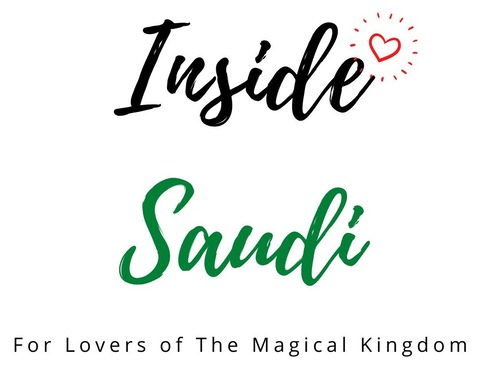We all know about the two Eid holidays in Islam; Eid Al Fitr and Eid Al Adha. Sadly, we know far less about the important differences between the two.
Sure, both holidays are a time for celebration and for giving thanks to Allah (SWT) for the wonderful blessings that Muslims enjoy.

The following article outlines how the two Eids are the same and what the main differences are.
To get more precise information, I consulted a well-known religious scholar or Shaikh based here in Saudi Arabia to hear his views.
Here is what I learned:
So, How Are The Two Islamic Eids Different?
The Eid Al Fitr celebration marks the end of the 30 days of fasting in Ramadhan. However, Eid Al Adha is a sacrifice occurring at the end of the 5 days of the Hajj pilgrimage. On Eid day, Muslims must give food, meat, and money to the poor. They also enjoy special sweets and visiting relatives.
When most Muslims talk about the two Eids, they find it difficult to explain the differences.
To them, both Eids are the same Islamic holidays, a time for relaxation, eating more Eid cakes and sweets, and catching up with family and old friends.
Whilst fun and games are important during both Eids, we should also be aware of the religious significance of each in Islam.
Can You Spot The Important Differences Between Eid Al Fitr & Eid Al Adha In The Chart Below?
| Features | Eid Al Fitr | Eid Al Adha |
| English Name | Celebration of Fasting | Celebration of the Sacrifice |
| Objective | Feast Ending The 30 Days Fast | Feast Ending Hajj With A Sacrifice |
| Timing | End of Month of Ramadhan (67, 68 or 69 days difference) | End of Month of Hajj (Makkah) (67, 68 or 69 days difference) |
| Frequency | Yearly | Yearly |
| Specific Dates | 1st Day of Shawwal (Hijri Calendar  ) ) | 10th Day of Dhu Al Hijjah (Hijri Calendar  ) ) |
| Duration | 3 Days | 3 Days |
| Religious Rituals | Takbeer -3 Days Eid Prayer Thanking Allah (SWT) Giving Zakat (Alms): Food | Takbeer -3 Days Giving Zakat (Alms): Money Eid Prayer Thanking Allah (SWT) Sacrifice Giving Zakat (Alms): Money |
| Social Acts | Traditional/ New Clothes Eating Special Sweets Visiting Relatives | Traditional/ New Clothes Eating Special Sweets Visiting Relatives |
Did you see them?
How Are Eid Al Fitr & Eid Al Adha The Same?

A. When Do The Eid Holidays Occur?- (Their Frequency)
Both Eids are annual events. However, they do not fall on the same day, every year. This is because Ramadhan & Hajj and the two Eid holidays follow the Islamic or Hijri calendar and NOT Gregorian.
The Islamic year is 11 to 12 days shorter than the Gregorian.
The Islamic calendar is lunar which means it follows the cycle of the moon. However, the Gregorian is solar which means it is based on the cycles of the sun.
Each year, the Eid holidays are always 11 or 12 days earlier than the one before it.
It also means that over time, both holidays occur during any one of the Gregorian months.
B. How Many Days Are Eid Al Fitr & Eid Al Adha? – (Their Duration)
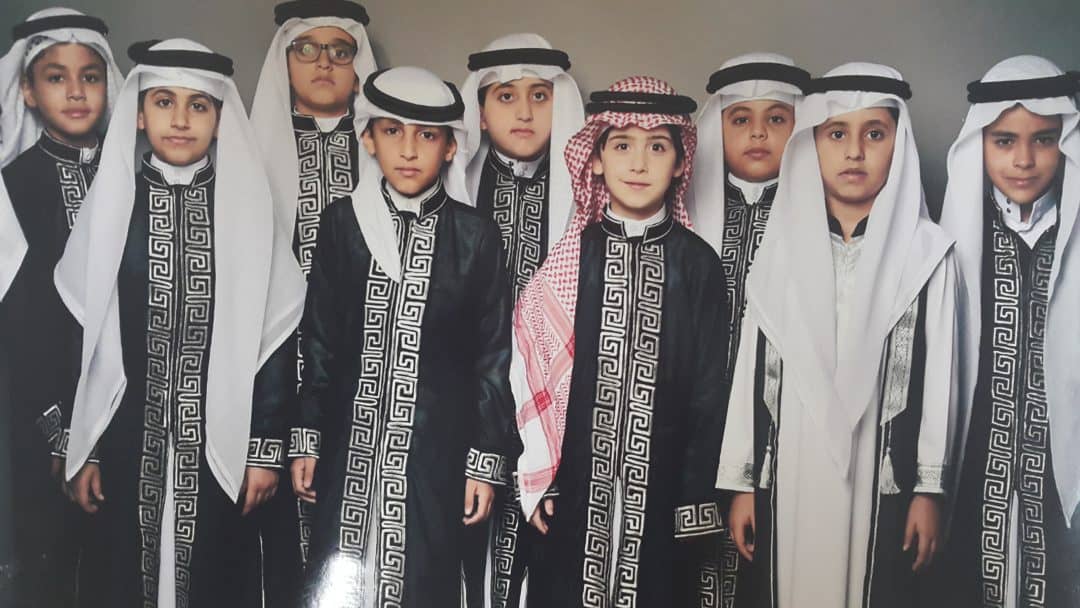
Both celebrations last three days in total.
Most Muslims say that the first day of Eid Al Fitr begins the day after Ramadhan ends which is the 29th or 30th of the Ramadhan (the ninth Islamic) month.
However, this is not the case.
The first day of the Eid Al Fitr holiday actually begins on the last night of Ramadhan on the 29th or 30th depending on the correct sighting of the crescent moon.
The last night of Ramadhan (after Maghrib prayer) is also when the first day of Shawwaal (the tenth month) begins.
Likewise, the second day of Eid Al Fitr begins on the night of the first day of Shawwaal. Accordingly, the third day of Eid Al Fitr begins on the night of the second day of Shawwaal.
Note: The three days of Eid Al Fitr finish at the outset of Magrib prayer time about 6pm on the 3rd day of Shawwaal.
In the same way, the first day of Eid Al Adha starts on the night of the ninth day of the Islamic month of Dhul Al Hijjah. (twelfth and last Islamic month)
By the same token, the second day of Eid Al Adha starts on the night of the 10th day of Dhul Al Hijjah and the third day begins on the night of the 11th day.
Eid holidays are based on the lunar system and the movement of the moon around the earth and NOT the sun.
C. What Is the Religious Significance Of Celebrating Eid Al Fitr & Eid Al Adha? – (The Rituals)
Making Takbeer Or Continuously Reciting Allahu Akbar, Allah Akbar (God Is Great)
Immediately, after Magrib prayers (around 6 pm), on the last night of Ramdhan (29th or 30th), the Imam (leader) of the mosque starts off the first round of making Takbeer or reciting the following:
Allahu Akbar, Allahu Akbar, Allahu Akbar Wah Lileh Al Hamd
Allah Is Great, Allah Is Great, Allah Is Great And All Praise Belongs To Allah (SWT)
Takbeer or Magnification of Allah (SWT)
As the Imam sits on the mosque floor to recite the Takbeer, the seated worshipers join in. They usually recite the same words in unison with the Imam, and they repeat it 12 times.
However, this is incorrect too!
The correct way to offer the Takbeer during the three days of Eid is to stagger the recitation and NOT to do it in unison.
When the Imam begins the recitation, the individual members of the prayer congregation should also recite but not at the same moment and not with the same timing.
The result should be an odd mix, a cacophony of voices that begin and end the Takbeer at different places and in differing timings.
The same is true for the Takbeer of Eid Al Adha. The unified, but broken individually made recitation of Muslims making Takbeer continues for 3 days.
They can offer Takbeer at ANY TIME of day or night during the three days of Eid Al Fitr & Eid Al Adha.
However, any recitation should end completely at Maghrib time (around 6pm) on the third night of Eid.
Offering Eid Prayers
On the morning of the first day of Eid Al Fitr and Eid Al Adha, Muslims pray the Eid prayer in the congregation. The prayer for each Eid is the same.
It consists of short formal prayer and a sermon (Khutbah). Also, Muslims are not allowed to fast on the first day of Eid.
Muslims offer the Eid prayer with 12 (sometimes 13) Takbeer recitations of the words Allahu Akbar (God is Great) and by doing two Rak’ahs.
The Imam starts the first Rak’ah by reciting the Allahu Akbar Takbeer 7 times. After each Takbeer, worshipers repeat the words after him in unison.
With each Takbeer they raise their hands to their heads. Then, they perform the first Rak’ah.
The second Rak’ah is the same as the first, except the Imam recites the Takbeer another 6 times.
For the Eid prayer, Muslims pray outdoors on a large open ground specially prepared for the occasion. It usually starts early around 6 am or 7 am and lasts for about 45 minutes.
Worshipers come to the praying area dressed in fresh new clothes.
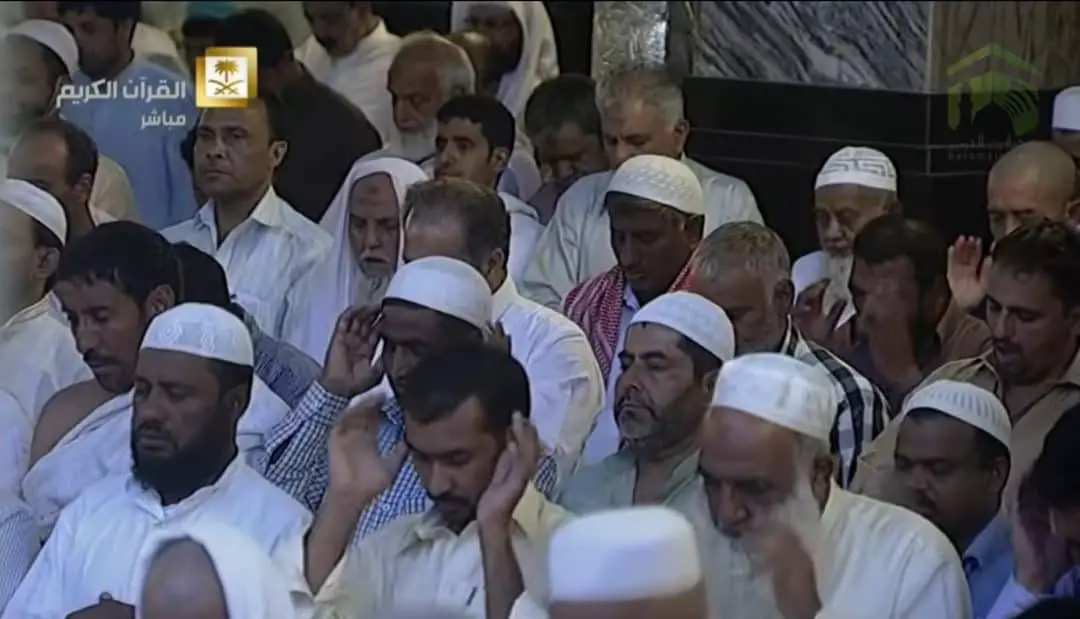
They prefer to walk from their homes to the prayer ground (Musalat) rather than to take transport. As they approach, they recite the Takbeer in a loud voice.
Allahu Akbar, Allahu Akbar, Allahu Akbar Wah Lileh Al Hamd
Allah Is Great, Allah Is Great, Allah Is Great And All Praise Belongs To Allah (SWT)
Takbeer or Magnification of Allah (SWT)
When they arrive, they find a separate area for men and another for women and children.
They also put down special sheepskin rugs or prayer mats to pray on and to listen to the Eid sermon (Khutbah).
The Eid prayer ends with a sermon (Khutbah) encouraging worshipers to give thanks to Allah (SWT) and with words explaining the significance of Eid.
After the prayer has finished, Muslims stand up, hug and congratulate each other on the occasion of Eid. They say Eid Mubarak (عيد مبارك) which means Blessed Eid.
Many Arabs also say to each other Kuli Am Wah Entum Bikhair (كل عام و أنتم بخير) which means May You Be Blessed Year In And Year Out.
Various other Eid greetings exist and they differ from country to country.
Scholars consider both Eid prayers to be a clear Sunnah (Muakkadah) which means they are obligatory for men to perform and highly encouraged for women and children to attend.
Giving Thanks And Praises To Allah (SWT)
Muslims pray and fast the month of Ramadhan in obedience to Allah (SWT). He guides us and blesses us for our compliance.
For this, we feel thankful and experience a strong sense of gratitude towards Allah (SWT).
The three days of Eid begin and end with words of gratitude and praise for Allah (SWT) in the recitation of the Takbeer:
Allahu Akbar, Allahu Akbar, Allahu Akbar Wah Lileh Al Hamd
Allah Is Great, Allah Is Great, Allah Is Great And All Praise Belongs To Allah (SWT)
Takbeer or Magnification of Allah (SWT)
These words are the first words uttered by Muslims on the 1st day of Eid and the last words we say at the time of the Maghrib prayer on the third or last day of Eid.
Social Acts- Eating, Drinking And Visiting Family and Friends
Immediately after the Eid prayer, Muslims visit friends and relatives to chat, eat sweets, drink coffee, and celebrate the ending of Ramadhan or the Hajj pilgrimage.
They dress their best in new outfits and go out to parks, fairgrounds, forests, or the sea-side.
There is a festive, fun atmosphere during these three days and children especially love it.
How Are Eid Al Fitr & Eid Al Adha Different?
A. Why Are Eid Al Fitr and Eid Al Adha Named Differently?
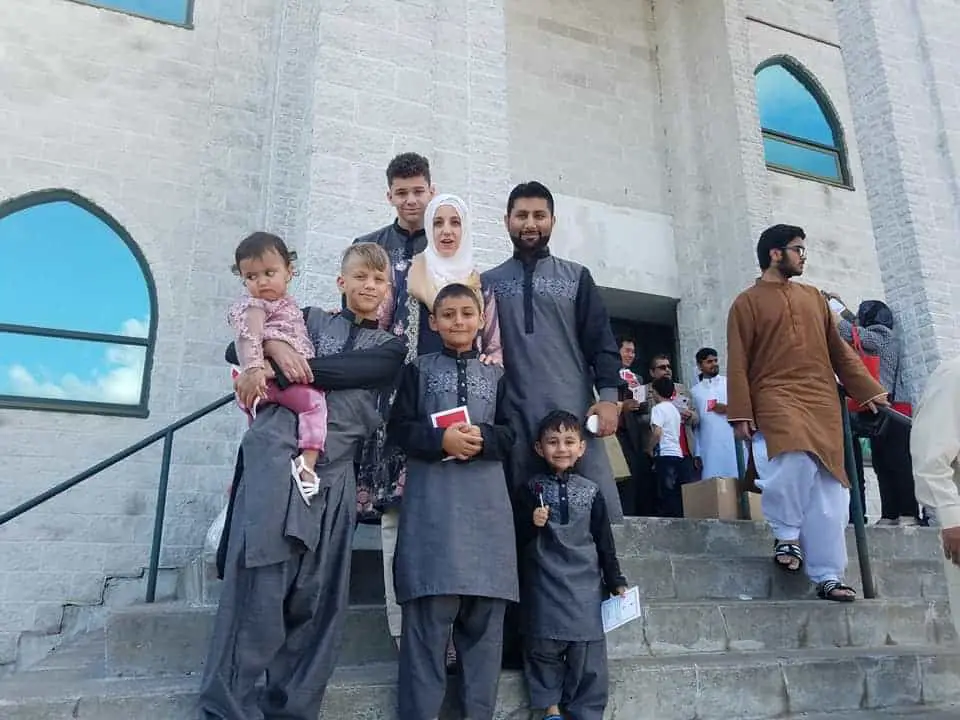
Eid Al Fitr
In Arabic, the word Eid (العيد) means celebration, festival, or anniversary.
So, for example, Easter, Christmas Day, and your birthday are Eids since they celebrate and commemorate a special occasion.
The word Al Fitr derives from the word Iftar (إفطار) which is the meal Muslims eat when breaking their fasts in Ramadhan or on the voluntary days of fasting.
Therefore, Al Eid Al Fitr (عيد الفطر) literally means the festival or celebration of the breaking of the fast at the end of the 30 days of Ramadhan.
Eid Al Adha
In Arabic, Eid Al Adha (عيد الأضحى) is the festival or celebration of the sacrifice. The word Al Adha (الأضحى) derives from Al Udhiya (الأضحية) or animal sacrifice.
Therefore, Eid Al Adha (عيد الأضحى) literally means the celebration or feast of the sacrifice of the slaughtering of sheep, goat, cows or camels to mark the end of the Islamic Hajj pilgrimage.
B. How Many Days Separate Are Eid Al Fitr & Eid Al Adha?
The time difference between the two Eids can be 67, 68, or 69 days. The number depends on the length of the months which itself depends on the sighting of the crescent moon at the start of each new Islamic month.
The following are the 12 months of the Islamic Calendar.
- Muharram
- Safar
- Rabi’ Al Awwal
- Rabi’ Al Thani
- Jumada Al Awwal
- Jumada Al Thani
- Rajab
- Sha’ban
- Ramadhan (Start of Eid Al Fitr)
- Shawwaal
- Dhu Al-Qi’dah
- Dhu Al-Hijjah (Start of Eid Al Adha)
Note that there are two months (29 or 30 days of Shawwaal and Dhu Al Qi’dah AND the first 9 days of Dhu Al Hijjah) separating the start of Eid Al Fitr and the start of Eid Al Adha.
Quran 2:189 stipulates that each new moon should mark the first day of each of the new months 1-12 listed above.
stipulates that each new moon should mark the first day of each of the new months 1-12 listed above.
On average a new moon occurs every 29 days, 12 hours, 44 minutes, and 3 seconds. So, each Islamic month is either 29 or 30 days long.
If the Hilal or crescent moon is sighted on the last day of each month, the new moon cycle begins the following day and that day becomes the first day of the new month.
Each new moon must be sighted by human witnesses so mathematical calculations and a fixed calendar are not valid measurements.
The table below shows that 68 days is the most likely time difference between the two Eids based upon the most probable appearance of the new crescent moon sighted at the end of each of the two Islamic months Shawwaal and Dhu Al Qi’dah.

However, 67 and 69 days are also possible!
| No | Islamic Month | Possible | Most Likely | Possible |
| 10 | Shawwaal | 29 | 30 or 29 | 30 |
| 11 | Dhu Al Qi’dah | 29 | 29 or 30 | 30 |
| 12 | Dhu Al Hijjah | 9 | 9 | 9 |
| Total | 67 days | 68 days | 69 days |
C. What Do Muslims Do On The Day Of Eid Al Fitr & Eid Al Adha -(The Religious Rituals)
The main differences between Eid Al Fitr and Eid Al Adha are the religious rituals. First, Muslims should give food charity or Zakat to the poor for Eid Al Fitr.
However, for Eid Al Adha, they should give meat to the poor.
| Eid Al Fitr | Eid Al Adha |
| Takbeer -3 Days | Takbeer -3 Days |
| Eid Prayer | Eid Prayer |
| Thanking Allah (SWT) | Thanking Allah (SWT) |
| Giving Zakat (Alms): Food | Giving Zakat (Alms): Sacrifice |
Eid Al Fitr – Giving Alms
In Quran 2:183-85, Allah (SWT) orders Muslims to fast the month of Ramadhan unless they are sick. Also, in Quran 2: 110
Allah (SWT) orders Muslims to fast the month of Ramadhan unless they are sick. Also, in Quran 2: 110 Allah (SWT) orders Muslims to give charity (Zakat).
Allah (SWT) orders Muslims to give charity (Zakat).
However, it was Prophet Mohammed (SAW) who established the giving of food as Zakat at the end of Ramadhan.
Every Muslim man, woman, and child is obliged to pay it.
At the time of Prophet Mohammed (SAW), his companions would pay one Sa’ of the following items as Zakat to the poor:
- food
- dates
- barley (grains)
- raisins
- dried yogurt
(Abu Saeed Al Khudree reported in Muslim 2, p. 469, no. 2155][2])
One Sa’ = four double handfuls or 2.5-3 kg/ 6lbs.
Today, Muslims prefer to pay an equivalent amount in cash to charitable Zakat organizations (Khareyat) that use the money collected to buy food items in bulk before distributing it to the poor.
It is the case in Saudi Arabia.
Personally, I combine the Zakat contributions from each member of my family and buy foodstuffs like those listed above.
Later, we distribute the purchased items to the families we know well in the community that most needs it.
Eid Al Adha- Giving Meat
On the first day of Eid Al Adha, Muslims slaughter sheep, goats, camels, or camels.
Many invite traditional butchers to their homes and conduct the sacrifice in the backyard or on the rooftop.
They even do the slaughter themselves or call in family and friends to help with the sacrifice, preparation, cutting and dressing the animal carcass.
Why Do Muslims Slaughter On Eid Al Adha?
The day of the Greater Eid Festival (Eid Al Adha) marks the end of the Hajj or the annual Islamic pilgrimage to Mecca/Makkah in Saudi Arabia.
Muslims worldwide celebrate this day in remembrance of Prophet Ibrahim’s (Abraham) willingness to slaughter his own son, Ismael before Allah (SWT) intervened and ordered him to kill a sheep instead.
Ibrahim had seen the slaughter of his son Ismael in a dream.
The story is given in the Holy Quran, As Saffat 37: 102-111 . Click the link to see read and listen to this event in the Holy Quran.
. Click the link to see read and listen to this event in the Holy Quran.
Follow this link to read a complete explanation as to Why Muslims Slaughter A Sheep On The Day Of Eid
How Much Meat Must Muslims Give To The Poor For Eid?
After making a sacrifice, the carcass of the Udhiya should be divided into three parts.
Each of the following should receive 1 third of the total amount of meat.
- The Buyer/Slaughterer
- Family, Friends, and Neighbors
- Poor Families
I know many Muslims who cook the meat, deliver it or invite poor people to their homes to enjoy a feast.
The animal carcass is stored in freezers and over the next month or two following Eid Al Adha, delicious meat dishes are prepared and shared with family, friends, and the poor.
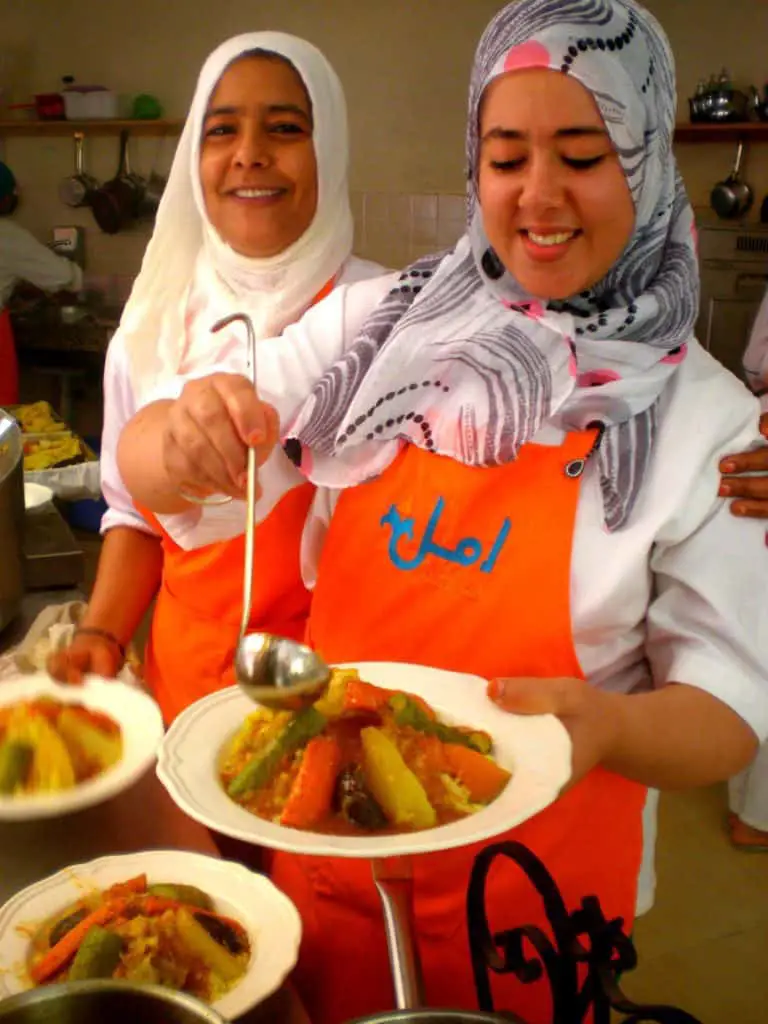
 In Marrakesh, Morocco
In Marrakesh, MoroccoRelated Questions
Does Eid last 1 or 3 Days?
Both Eids last 1 day in some Muslim countries but 3 days in most of them. You can slaughter your Udhiya (sacrifice) any time during those three days of Eid Al Adha.
Can You Pray The Eid Prayer At Home?
In Islam, Muslims are allowed to pray the Eid prayer at home if they are unable to attend the congregational prayer areas for reasons of sickness or logistics.
Is Eid Like Christmas?
Modern Christmas is the commercial celebration of the birth of Christ. The two Islamic Eids commemorate the end of the 30 days of fasting Ramadhan and the end of the Hajj pilgrimage.
What Kinds Of Food Do Muslims Eat For Eid?
Each country has its own list of Eid Al Fitr/Al Adha dishes. They include the usual delicious meat recipes and others that also use the organs, bones, and offal of the slaughtered animal. There are also many kinds of Eid sweets. In the Arab world, people buy cakes made of nuts and cakes made of marzipan.
Are Either Of The Two The Eids Mentioned in the Quran?
No, they are not!

References And Useful Links
- When Should Takbeer For Eid Al Fitr Begin
 – Islam Q & A
– Islam Q & A - Fasting In Shawwaal
 – Wikipedia
– Wikipedia - Explaining Takbir
 – Wikipedia
– Wikipedia - Ruling On Eid Prayers
 – Islam Q&A
– Islam Q&A - Offering Eid Prayer At Home
 – Islam Q&A
– Islam Q&A - Eid Al Fitr
 – Wikipedia
– Wikipedia - Eid Al Adha-
 Wikipedia
Wikipedia - How Many Days After Eid Al Fitr Is Eid Al Adha
 – Quora
– Quora - Why Does Saudi Arabia Use The Hijri Calendar Instead Of The Wester Gregorian Calendar
 – insidesaudi.com
– insidesaudi.com - What Is Zakat Al Fitr?
 -zakat.org
-zakat.org - Zakat Al Fitr
 – peoples needs
– peoples needs - Qurbani Meat Rules
 – mustaphameattrust
– mustaphameattrust
